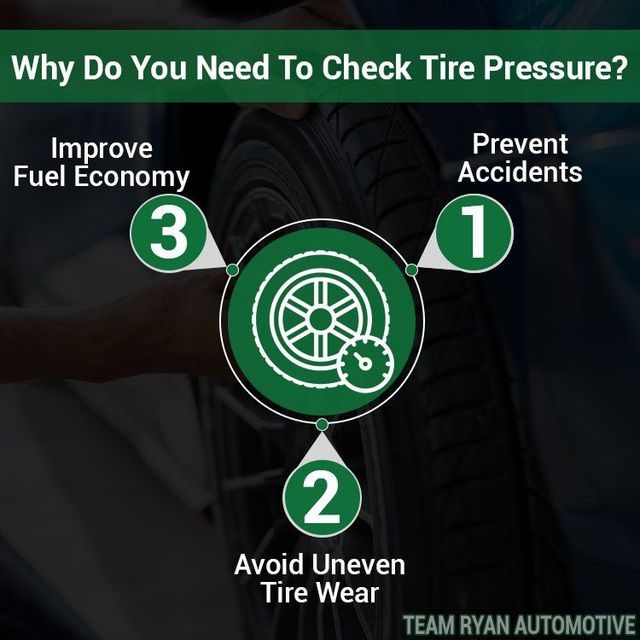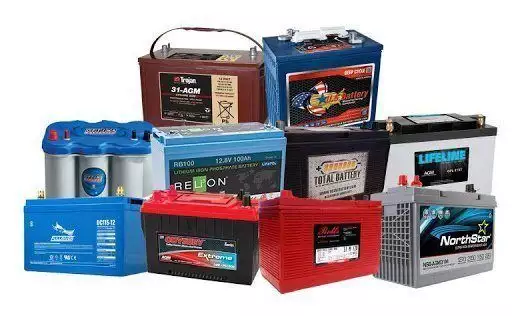How to Check Tire Pressure Without Gauge
To check tire pressure without using a gauge, you can use the penny test. Place a penny upside down into the tire’s tread grooves.
If you can see all of Lincoln’s head, the tire is worn and needs to be replaced.

Credit: rnrtires.com
Common Methods For Checking Tire Pressure
When it comes to ensuring optimal tire performance and safety, regularly checking tire pressure is key. There are various methods for checking tire pressure without a gauge that can be utilized effectively.
Visual Inspection
Visually assessing your tire’s pressure by looking for signs of underinflation or overinflation, such as noticeable bulges or depressions, can indicate potential issues.
Manually testing tire pressure by pressing firmly on the tire with your thumb and observing the compression can provide a rough estimate of the pressure levels.

Credit: www.wikihow.com
Using Visual Inspection
Checking your tire pressure regularly is essential for maintaining optimal performance and safety on the road. While using a tire gauge is the most accurate method, it’s not always convenient. Thankfully, you can still assess your tire pressure without a gauge by using visual inspection techniques. In this article, we’ll show you how to conduct a visual inspection in two simple steps: examining tire shape and checking tread wear.
Examining Tire Shape
One way to gauge the pressure of your tires is by visually examining their shape. Start by standing a few feet away from your vehicle and observing the tires from a straight-on angle. Look for any noticeable bulges or dips in their surface. Bulges usually indicate overinflation, while dips suggest underinflation.
Next, you’ll want to check the overall symmetry of the tire’s contact patch, which is the part that comes into contact with the road. A properly inflated tire should have an even and consistent contact patch. If you notice one side of the tire appearing flatter than the other, it could be a sign of significant underinflation. On the other hand, if the tire’s center seems to be touching the ground more than the edges, it might be overinflated.
If you see any irregularities in the tire shape, it’s a good idea to have your tire pressure checked with a gauge to ensure accurate measurements. But, if the tires appear to have a consistent shape and symmetry, there’s a good chance they’re properly inflated.
Checking Tread Wear
Another visual inspection technique to estimate tire pressure involves examining the tread wear. Tread wear is the depth of the grooves on the tire’s surface, which directly affects traction and handling. Inflation issues can often cause uneven tread wear, providing valuable clues about the tire pressure.
One simple way to check tread wear is by inserting a penny into the grooves of the tire with Lincoln’s head facing down. If you can see all of Lincoln’s head, it’s likely that your tires are worn and need to be replaced. However, if part of Lincoln’s head is covered by the tread, your tires should have acceptable tread depth, indicating proper inflation.
Remember that tread wear is not always a direct indicator of tire pressure, and other factors such as improper wheel alignment or suspension problems can also cause uneven wear patterns. Nevertheless, checking the tread wear can still provide a rough estimation of the tire pressure.
In conclusion, while using a tire pressure gauge is the most accurate method, you can still get a general idea of your tire pressure through visual inspection. By examining the tire shape and checking for uneven tread wear, you can assess if your tires are properly inflated or if further investigation with a gauge is necessary.
Manual Pressure Testing
Learn to conduct manual pressure testing for your tires easily without using a gauge. Simply press firmly on each tire with your hand to check the pressure and ensure they are properly inflated for safe and efficient driving. This quick and simple method can help you maintain optimal tire pressure levels on the go.
Introduction: Manual Pressure Testing
When it comes to checking tire pressure without a gauge, manual pressure testing is a simple yet effective method. This technique relies on intuitive measurements and sensory cues rather than using a traditional gauge. In this section, we will explore two popular ways to manually test tire pressure: the utilizing body weight method and listening for air leaks. These methods can be especially handy in situations where a tire gauge is not readily available or when you simply prefer a more hands-on approach. Let’s dive in and learn how to check tire pressure using these manual techniques.Utilizing Body Weight Method
One of the easiest ways to check tire pressure without a gauge is by utilizing the body weight method. This method involves carefully observing the behavior of the tires when pressure is applied. To check the tire pressure using this method, follow these steps:- Park your vehicle on level ground and ensure the tires are cool to the touch.
- Place your foot on the center of the tire tread, applying even pressure. Be cautious not to exert excessive force.
- Observe how the tire reacts under your weight:
| Tire Reaction | Interpretation |
|---|---|
| The tire feels overly spongy and bulges outwards. | The tire is likely underinflated. |
| The tire feels rock hard and lacks any give. | The tire is probably overinflated. |
| The tire maintains a firmness with a slight amount of flex. | The tire pressure is likely within the recommended range. |
Listening For Air Leaks
Another method to manually check tire pressure is by listening for air leaks. This approach helps you identify any potential issues with tire integrity or slow leaks. To check tire pressure using this technique, follow these steps:- Find a quiet location where you can focus on the tire and ambient noise is minimized.
- Carefully inspect the tire, looking for any visible signs of damage or punctures.
- Place your ear close to the valve stem.

Credit: www.teamryanautomotive.com
Frequently Asked Questions Of How To Check Tire Pressure Without Gauge
How Can I Check My Air Pressure Without A Gauge?
To check air pressure without a gauge, look for a tire pressure monitoring system (TPMS) light on your dashboard. You can also use your foot to visually inspect the tire’s condition. If it looks flatter than usual, it may be underinflated.
How Do You Check Tire Pressure By Hand?
To check tire pressure by hand, use a tire pressure gauge. Unscrew the valve cap and press the gauge onto the valve stem. The gauge will provide a reading in PSI. Compare the reading to the recommended tire pressure in the vehicle’s manual or on the sticker inside the driver’s side door jamb.
Adjust as needed.
How Do You Check Tire Pressure At A Gas Station?
To check tire pressure at a gas station, locate the air pump, set desired pressure on gauge, attach hose to tire valve, and inflate/deflate as needed.
How Do You Release Tire Pressure Without A Gauge?
To release tire pressure without a gauge, you can press the valve stem at the center of the tire with a small object, such as a key or the back end of a pen. Do it gently until you hear a hissing sound, indicating that air is being released.
Check the pressure with a gauge afterward to ensure it’s at the desired level.
Conclusion
Keeping your tires properly inflated is crucial for safety and performance. Even without a gauge, you can rely on visual inspection and the simple thumb test to check tire pressure. Remember, maintaining the right tire pressure will prolong tire lifespan and improve fuel efficiency.
Stay safe on the road!

